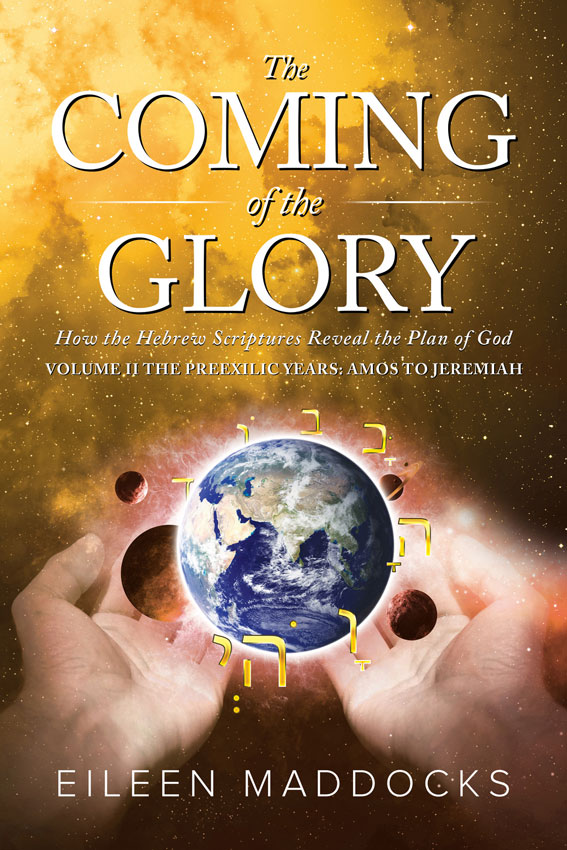How the Hebrew Scriptures reveal the plan of God
Volume 2 of The Coming of the Glory, was released in June 2022, starts the journey with the early classical prophets in the divided kingdoms of Israel and Judah.

After Elijah, the times of the prophets waned for about one hundred years until the appearance of the prophets Amos and Hosea in Israel, and Micah, Isaiah, Zephaniah, Nahum, Habakkuk, and Jeremiah in Judah. This phase lasted from about 750 BCE to the 580s, a time of ascending literacy when the words of the prophets could be more easily recorded and preserved.
Ponder Amos’s words on the inner meanings of the Lord roaring from Zion and uttering His voice from Jerusalem, the hill of God, and the tabernacle of glory. Contemplate Hosea’s use of marriage as a metaphor, the inner meanings of the Valley of Achor, and the background to his famous warning about sowing the wind and reaping the whirlwind.
Volume 2 goes deeply into Isaiah’s writings on the Day of the Lord and the gathering of the Jews in their homeland, the Holy Land, and delves into the many meanings of his writings on the child, the Prince of Peace, the rod, and the branch.
Discover all the ways the people of Jeremiah’s time would not listen, and what happened when they did not listen.
The beauty of the words of the prophets and their prophecies through a sweep of twenty-five hundred years are awe-striking.

I have written two blogs summarized from two chapters in Volume 2. “Balaam in the Bible” gives surprising information on Balaam as the first recorded prophet among the Israelites and his famous saying––What hath God wrought?––which was actually a prophecy.
Who was Micah? Read about him in “Who Was Micah in the Bible?” He condemned the greed and corruption of his time, the oppressions of the poor, and the corruption of Moses’s Dispensation. Micah also described the travels of Bahá’u’lláh from one place of exile to another, and how he foresaw Akka, the prison city in Ottoman Turkish Palestine, as the door of hope for all humanity. Read these excerpts and join us on an amazing journey into Bible prophecy!
The Coming of the Glory—Trilogy
The spiritual evolution of humanity

Volume 1 of The Coming of the Glory explores the spiritual evolution of humanity in the Middle East from Paleolithic hunter-gatherer days through to the ministries of Abraham and Moses, and then the days of the judges, the united kingdom, and the early divided kingdom. The prophets of those times were often unnamed, but they made significant contributions. The named prophets include Elijah, who heard God as a quiet voice within, thus marking a point in spiritual evolution where the one God was not an anthropomorphic storm god, but was a divine voice to be heard on the inner level.
ISBN: 978-1732451186
Publisher: Something or Other Publishing
The preexilic, canonical prophets
Volume 2 covers the preexilic, canonical prophets Amos, Hosea, Isaiah, Micah, Zephaniah, Nahum, Habakkuk, and Jeremiah within the context of their geopolitical and social times. Previously, prophets such as Nathan and Elijah were covered within the context of other narratives. The canonical, or classical, prophets were those whose teachings and writings were saved separately and put in books named after them.
Publisher: Something or Other Publishing
The exilic and postexilic prophets
Volume 3 covers the exilic and postexilic prophets, all within the context of their historical times. The exilic prophets were Elijah, Daniel, Obadiah, and Second Isaiah, and the postexilic prophets of the Restoration were Haggai, Zechariah, Malachi, Third Isaiah, and Joel.
